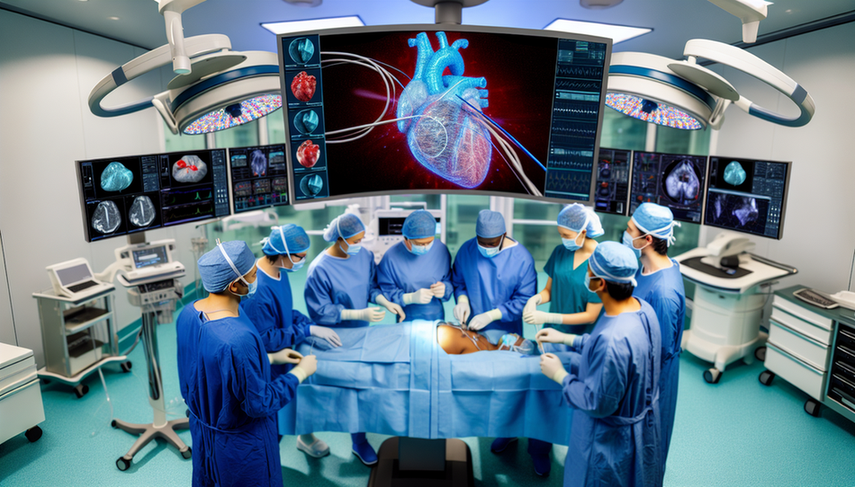AI in Cardiac Surgery: From Virtual Planning to Assisted Surgical Robotics with Augmented Reality

The assisted cardiac surgery powered by artificial intelligence (AI) is revolutionizing how surgeons plan and execute complex procedures. The integration of advanced technologies such as augmented reality and surgical planning is enabling healthcare professionals to visualize and manipulate three-dimensional models of the heart, thereby enhancing the precision and safety of interventions. This advancement not only optimizes preoperative preparation but also provides real-time assistance during surgery.
From Virtual Planning to Surgical Assistance
The implementation of AI in the operating room has led to the development of surgical planning systems that utilize three-dimensional models to simulate complex procedures. An example of this is the use of virtual reality and augmented reality for planning lung segmentectomies, which has been shown to improve preoperative anatomical understanding and adjust surgical strategies in 40% of cases.
In the realm of cardiac surgery, virtual reality environments have been developed for preoperative planning and simulation of image-guided intracardiac procedures, utilizing robotic manipulators. These systems allow surgeons to dynamically explore the changing environment of a beating heart, thus improving the accuracy of interventions.
Moreover, the optimal port placement and enhanced guidance in assisted robotic cardiac surgery are essential for improving preoperative planning and intraoperative navigation. The overlay of virtual models of the thorax and the robotic arms over the real-world view allows for precise port placement, resulting in a significant reduction in operation time.
Conclusions
The integration of AI in the operating room is transforming cardiac surgery, from virtual planning to real-time surgical assistance. These technologies not only enhance the precision and safety of procedures but also optimize surgical workflow, reducing operation time and improving patient outcomes. As these tools continue to evolve, we are likely to see even greater adoption of AI in cardiac surgery, opening new possibilities for innovation and advancement in the field.
Referencias
- [1] Virtual reality and artificial intelligence for 3-dimensional planning of lung segmentectomies
- [2] A novel virtual reality environment for preoperative planning and simulation of image guided intracardiac surgeries with robotic manipulators
- [3] Optimal port placement and enhanced guidance in robotically assisted cardiac surgery
Created 20/1/2025
